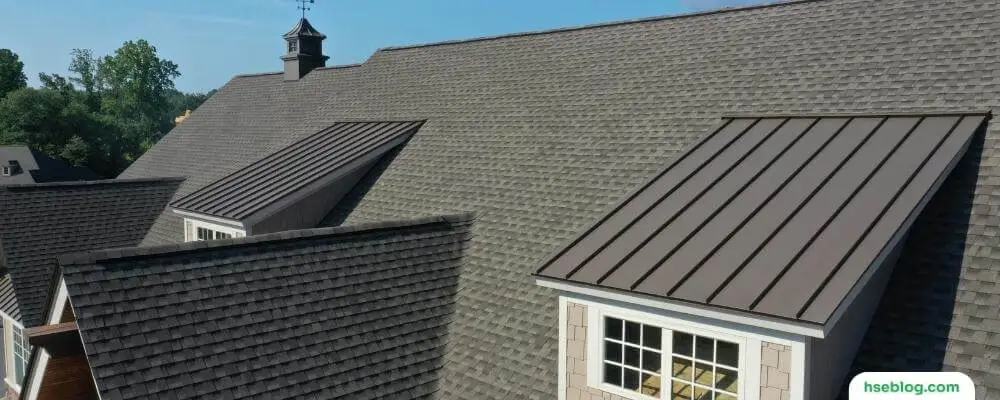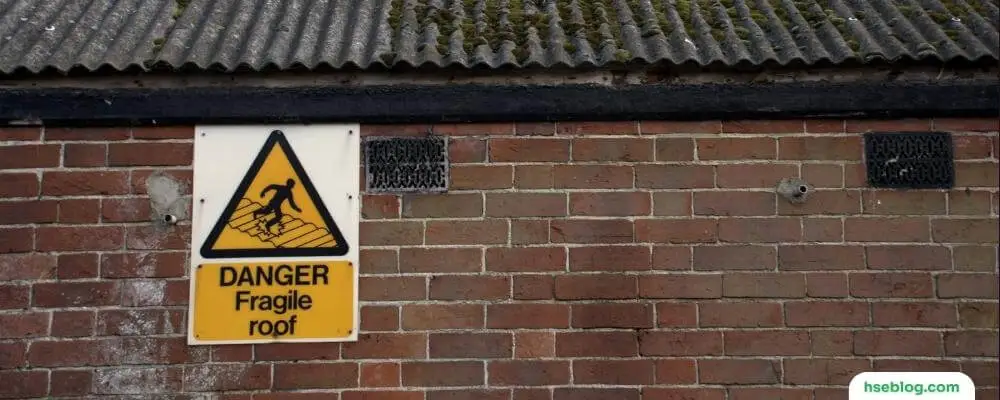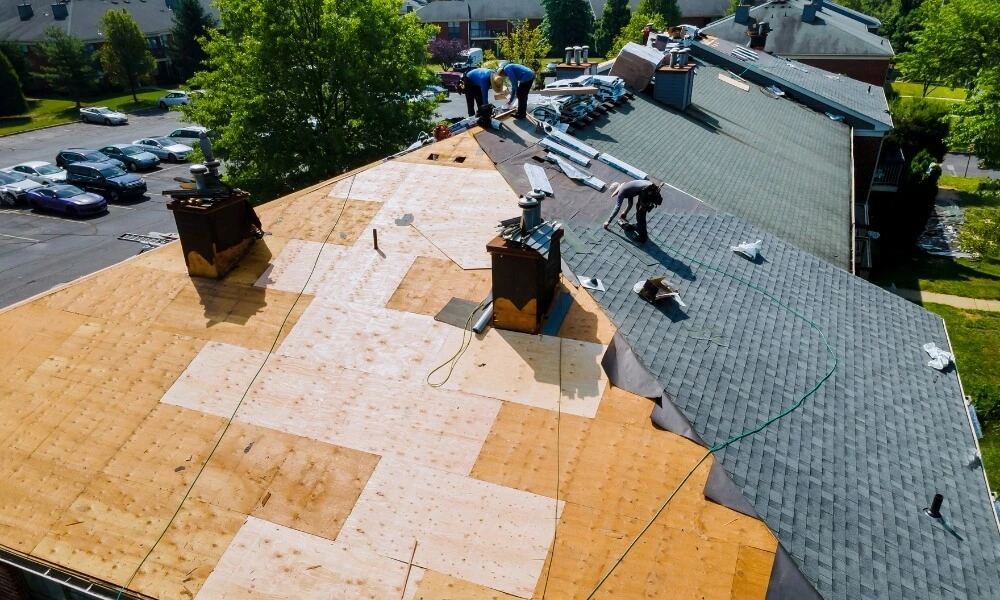Fragile roofs pose significant risks to workers engaged in roof work due to their inability to support weight safely. These roofs, commonly found in older or industrial buildings, can lead to severe injuries or accidents. Hazards associated with fragile roofs include falls through the roof, falls from the edge, falling objects, exposure to harmful materials, structural collapse, slips, trips, and falls, as well as adverse weather conditions.
To mitigate these risks, it is crucial to follow safety rules such as conducting risk assessments, using appropriate safety equipment, minimizing direct contact with the roof, employing crawling boards or roof ladders, assigning trained workers, using suitable tools and materials, marking fragile areas, maintaining a clean work area, and monitoring weather conditions. This comprehensive blog post will delve into fragile roofs, explore the associated hazards, and provide vital safety rules to mitigate these risks effectively.
What is Fragile Roof?
A fragile roof refers to a roof structure that lacks the ability to safely support the weight of individuals and their equipment. It is characterized by materials or conditions prone to breaking, collapsing, or giving way under pressure. Fragile roofs are often found in older or industrial buildings where deterioration or environmental factors have compromised their structural integrity.
Common examples of materials that contribute to a roof being fragile include glass, deteriorated fiber cement sheets, aged roof lights, corroded metal sheets, and weakened chipboard. It is important to treat any roof as fragile until it has been assessed and confirmed safe by a qualified professional.
Working on a fragile roof carries significant risks, as the structure may not withstand the weight placed upon it. The consequences of working on a fragile roof can be severe, including falls through the roof, falls from the roof’s edge, and the potential for falling objects. Due to the potential hazards of fragile roofs, it is crucial to exercise caution and follow appropriate safety protocols when conducting any work on them.

Fragile Roof Hazards You Need To Know
Working on a fragile roof involves various hazards that can lead to serious injuries or even fatalities if not properly managed. Here are some of the main hazards associated with fragile roofs:
- Falls through the Roof: The most apparent hazard is the potential for workers to fall through the roof if it cannot bear their weight. This is particularly dangerous if the roof is high above ground level and can lead to serious injury or death.
- Falls from the Edge of the Roof: There is also the risk of workers slipping or losing their balance and falling from the roof’s edge, especially if appropriate guard rails or other fall prevention measures are not in place.
- Falling Objects: Tools, materials, or roof pieces can fall during the work, posing a risk to people working below.
- Exposure to Harmful Materials: Some old roofs, particularly those constructed with asbestos cement sheets, pose a health risk as they can release harmful fibers if disturbed.
- Structural Collapse: If the structure supporting the roof is also fragile or deteriorated, there’s a risk of partial or complete structural collapse.
- Slips, Trips, and Falls: Wet, icy, or debris-covered roofs can be slippery, increasing the risk of slips and falls.
- Weather Conditions: High winds, rain, snow, or extreme temperatures can make work on a fragile roof even more hazardous.
To mitigate these hazards, conducting a thorough risk assessment before starting any work is essential, such as using appropriate safety equipment (like harnesses, safety nets, and guardrails) and following all safety guidelines and regulations for working at heights. Ensuring that only competent, trained individuals can work on fragile roofs is also important.

Safety Rules To Follow When Working On Fragile Roofs
Here are some essential safety rules to follow when working on fragile roofs:
- Risk Assessment: Conduct a thorough risk assessment to identify potential hazards and determine the necessary safety measures before beginning work.
- Use Appropriate Safety Equipment: Safety harnesses, nets, guard rails, and other fall prevention and protection equipment should be used. Also, workers should use suitable personal protective equipment (PPE) such as helmets, safety shoes, and gloves.
- Avoid Walking on the Roof When Possible: If the work can be done underneath the roof or from an elevated work platform, choose these options to avoid direct contact with the fragile roof.
- Use Crawling Boards or Roof Ladders: When moving across the roof, use crawling boards or ladders to distribute the weight more evenly and reduce the risk of breaking through the roof.
- Work Alongside Trained Professionals: Only trained and competent individuals should be allowed to work on fragile roofs. It’s also advisable to work in pairs or teams for safety.
- Use Proper Tools and Materials: Avoid equipment or materials that could damage the roof or increase the risk of falls.
- Install Warning Signs: Display clear signs and barriers to mark the fragile areas to ensure everyone on site knows the danger.
- Maintain Clean Working Area: Keep the work area clean and free of unnecessary tools or materials to reduce the risk of slips and trips.
- Monitor Weather Conditions: Avoid working on roofs during adverse weather conditions like rain, snow, or high winds, as these can make the roof more slippery and the work more dangerous.
- Emergency Planning: Have a clear emergency plan, including knowing the quickest way to get down from the roof and having a readily accessible first aid kit.
These rules are not exhaustive, and following all relevant local safety regulations and guidelines is essential when working on a roof. Safety should always be the top priority when working at height, particularly on fragile roofs.
Conclusion
understanding what constitutes a fragile roof, recognizing its associated hazards, and implementing proper safety rules are paramount for ensuring workers’ well-being. Fragile roofs, characterized by their inability to support weight safely, pose significant risks such as falls through the roof, falls from the roof’s edge, falling objects, exposure to harmful materials, structural collapse, slips, trips, and falls, as well as adverse weather conditions.
To mitigate these hazards, it is crucial to conduct thorough risk assessments, utilize appropriate safety equipment, minimize direct contact with the roof whenever possible, employ crawling boards or roof ladders, assign trained individuals for the task, use suitable tools and materials, mark fragile areas, maintain a clean work environment, and monitor weather conditions. Adhering to these safety rules and regulations can significantly reduce the risks of fragile roofs and create a safer working environment.
Ultimately, prioritizing safety and implementing proper precautions are essential in ensuring workers can carry out their tasks on fragile roofs with minimized risks, safeguarding their well-being and preventing potential accidents or injuries.

